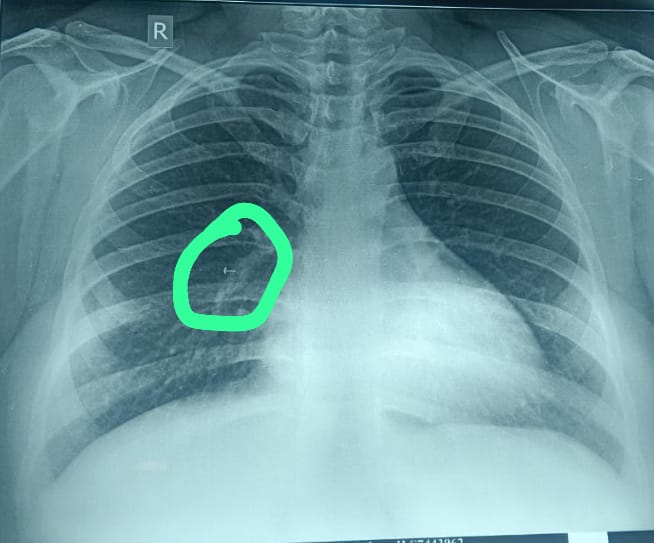Uptick in Viral Infections
Viral infections have been rapidly surging over the past two months. Every day, newspapers report a rise in cases of fevers of viral origin from influenza and common cold to dengue, hand, foot, and mouth

Viral infections have been rapidly surging over the past two months. Every day, newspapers report a rise in cases of fevers of viral origin from influenza and common cold to dengue, hand, foot, and mouth disease, COVID, and swine flu. New ones like tomato flu and monkeypox have also made an appearance. The monkeypox virus has been spreading gradually across the globe, the number of deaths from swine flu is increasing and the COVID virus has been mutating with many variants showing increased virulence. There is no single reason for this surge in viral infections but many factors have been in place leading to conditions conducive for viral infections taking shape for some time now.
World is getting smaller
Modern-day travel is an efficient disease spreader. An infectious disease from one country to another is only a flight away. Today, fresh produce, meat, fish, and other materials are transported from one part of the world to another. Microorganisms and vectors also travel with these goods. Among vectors introduced by the shipping of goods, the dengue virus vector and African Anopheles mosquito species stand out. Similarly, when there was a global lockdown, the viral infections had virtually disappeared. However, now we have monkeypox that came to India from a different continent.
Urban crowding
Densely crowded urban areas are characterised by air pollution, inadequate sanitation, and food and water contamination. The urban populace is exposed to an increased amount of environmental pollutants such as smoke from automobiles and dust and toxins generated from construction that contribute to poor air quality. Rural to urban migration also contributes to the spread of infectious diseases. While many migrate in search of jobs and better economic prospects, some migrate to evade climate change and natural disasters. The additional load of patients also puts stress on the urban health system. These factors lead to poor control of disease vectors causing the emergence of diseases and increasing their number.
Deforestation
Another factor is deforestation, which is leading to viruses that have a natural host in birds and animals spilling over to humans. Studies have indicated that the SARS-CoV-2 virus that causes COVID-19 spread to people from bats. The same is true with swine flu and monkeypox both of which have animal reservoirs. These viruses are not harmful to their animal hosts, however, when they infect humans, they cause disease outbreaks, as humans lack prior immunity.
Climate Change
Infection-causing pathogens are also aggravated by climate change. The change in climate affects the survival, reproduction, distribution of disease pathogens and hosts, and changes in the geographic range and habitats of disease vectors. Many disease-causing organisms are predisposed by environmental conditions such as temperature, rainfall, and humidity, all of which are affected by climate change. Increased rainfall and higher temperatures could provide favourable conditions for disease vectors. Meanwhile, drastic weather conditions can disrupt the healthcare infrastructure increasing the risk and scale of disease transmission.
Impact of the Global lockdown
Vaccination rates for diseases other than COVID-19 decreased during the pandemic. According to the WHO, global vaccination declined in 2021 with 25 million children missing out on lifesaving vaccines out of which 60% belong to 10 countries (India, Pakistan, and Myanmar among others) and 18 million did not receive any vaccines.
Be prepared and take precautions
We cannot be short-sighted with disease management. If monkeypox had been handled better in Africa, it would have not spread to countries across the globe. If COVID had been handled better in some low and middle-income countries, new variants would not have emerged. There is a vaccine against influenza, commonly known as flu shots that reduces the risk of flu illnesses by 40 – 60%, but not many of us are aware of them.
With festivals such as Ganesh Chaturthi and Navratri around the corner, people congregate in big numbers. Large gatherings during the festive season raises concerns of outbreaks and spread of infections. We need to focus on taking precautions and continue with booster doses and timely diagnosis and treatment to limit any spread.
With the virus variants showing high transmissibility, apart from vaccination, social measures are key to reducing the number of infections. Large celebrations should always be held in well-ventilated areas, as virus transmission is augmented in indoor settings, with closed doors and windows. Avoid large gatherings as much as possible and celebrate with your family. In public places, don’t forget about physical distancing, wearing a face mask, and following hand and respiratory hygiene.
If you feel any symptoms, test yourself at the earliest. While awaiting results, isolate yourself from other people to minimize the risk of infecting others, especially those who are vulnerable. The sooner the people are aware of their sickness, the easier it would be to determine their treatment.






